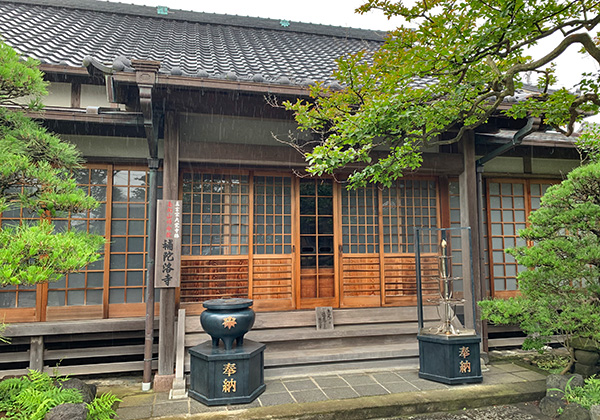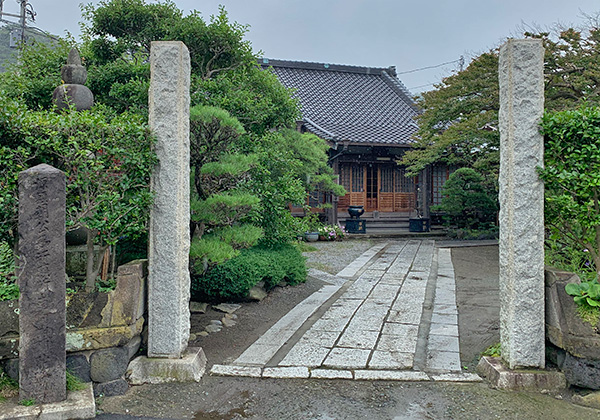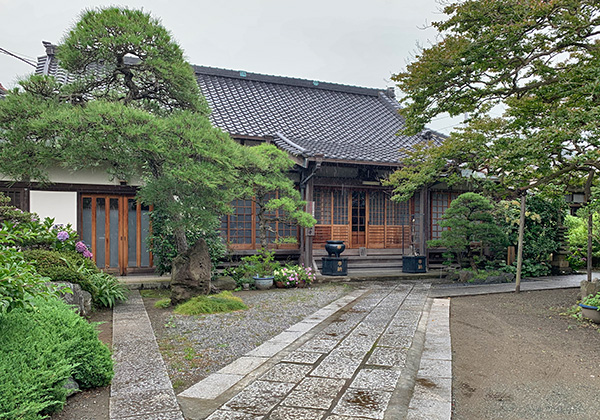Fudarakuji
| Official Name | Nankozan Kimyo-in Fudarakuji {Pronounced nan-koh-zan key-myo-in foo-dah-rak-gee} |
|---|---|
| Religious sect | Shingon sect, Buddhism |
| Founded | in 1151 by Yoritomo Minamoto {yo-re-toh-mo me-nah-moh-toh} |
| Founding priest | Mongaku {mon-gak} |
| Main object of worship | Statue of Eleven-Headed Kan'non |
| Address | 7-31, Zaimokuza 6-chome, Kamakura, Kanagawa 247-0013 (show route from current location ) |
| Location | 1,400 meters south of Kamakura Station |
| Time needed to get there | 25 minutes |
| Open | 9:00 - 16:00 |
| Phone number | 0467-22-8559 |
| Restrooms | Not available |
Historical Overview
Founding priest Mongaku (1139-1203) was originally a samurai in Kyoto serving the Imperial Guards in the late 12th century. He took the tonsure after killing a married court lady by mistake. What made him famous was his strict and ascetic discipline after he entered priesthood at Jingoji {gin-go-gee} , the mother temple of Shingon sect (also famous for the Yoritomo's portrait it owns). Back at the time, Jingoji was on the wane. Priest Mongaku tried to meet with Retired Emperor Goshirakawa {go-she-rah-kah-wah} (1127-1192) to ask for financial help. Goshirakawa gave him a flat refusal and did not even meet him. Outraged, Priest Mongaku snarled at the imperial court people with violence. As a result, he was exiled to the Izu {e-zoo} Peninsula, where he got acquainted with young Yoritomo Minamoto (1147-1199), the founder of Kamakura Shogunate, who also happened to be there in exile.
Priest Mongaku is said to have been the first aide for Yoritomo and helped organize the Minamoto ally. He urged Yoritomo to raise an army against the Taira Clan, Minamoto's arch-rival enemy, showing his father's skull. The Priest's suggestion encouraged Yoritomo to rise up against the Tairas and led him to unify Japan in the end. To reward him for his contribution, Yoritomo accepted his request to found the Temple. Naturally, the Temple served as a prayer hall for Yoritomo himself. Priest Mongaku's saga often appears in the ancient stories and was dramatized into Kabuki and Noh play.
The name Fudaraku was derived from Potalaka in Sanskrit, which is said to be the name of a mountain where Kan'non or Avalokitesvara in Skt. is believed to reside. Some believe the mountain really exists near Cape Comorin, India. The Potala Palace in Lhasa, Tibet also originates in Potalaka and the Dalai Lama is thought to be an incarnation of Kan'non. In Japan, Toshogu Shrine and Futara-san {foo-tah-rah-san} Shrine in Nikko, Tochigi Prefecture, one of the most famous tourist attractions, is also associated with Potalaka. Futara-san stems from Potalaka as the similar pronunciation of both words suggest, and Nikko is another mode of pronunciation of Futara, though their kanji (Chinese) characters are different.




